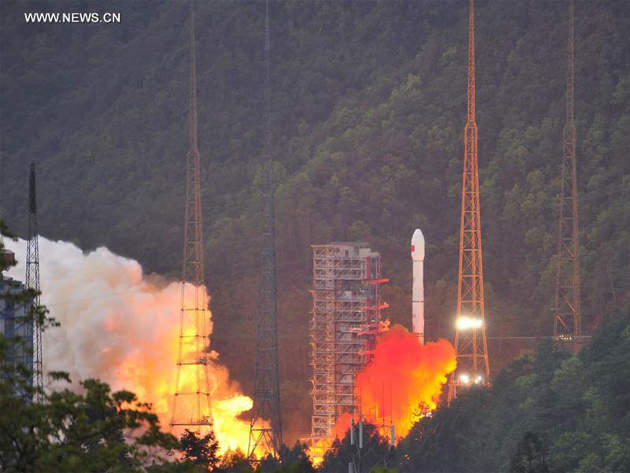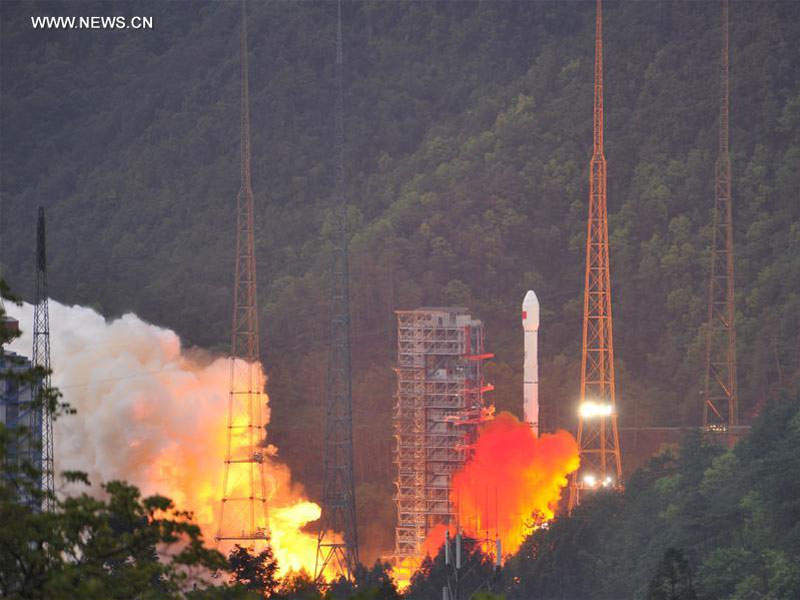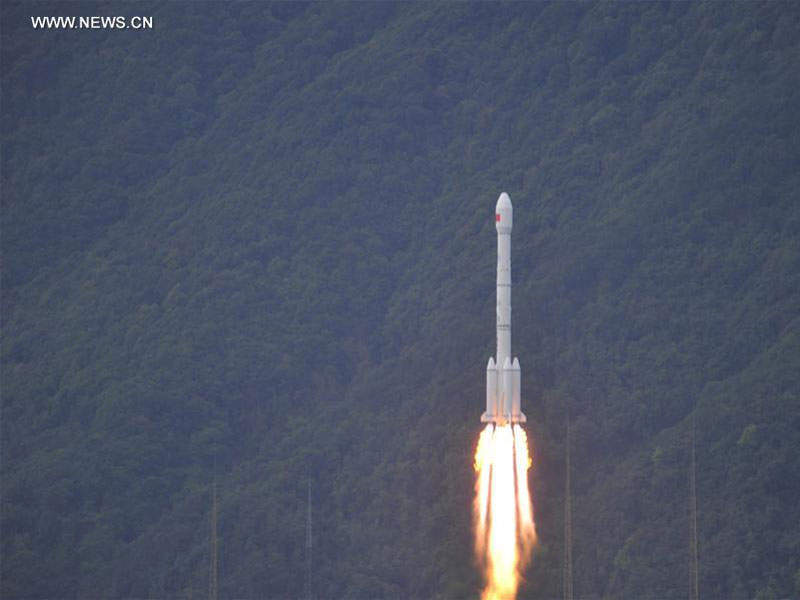China’s first high-throughput communications satellite, Shijian-13, was launched from Xichang Satellite Launch Center in Sichuan Province in April 2017.
To be located at 110.5°E longitude orbital position, the satellite will improve internet access on planes and high-speed trains.
To be operated by China Satcom, the satellite will be designated as Zhongxing-16 (ChinaSat-16) during its operational phase.
Design and development of China’s first high-throughput communications satellite
Shijian-13 was designed and manufactured by the China Academy of Space Technology (CAST) in collaboration with China Aerospace Science and Technology Corporation.
Featuring two solar arrays with an output power of 1.7kW and three-axis stabilised attitude control modes, the satellite has a launch mass of 4,600kg and includes a 220kg high-throughput satellite payload (HTS).
Designed for a life span of 15 years, Shijian-13 was based on the DFH-3B satellite bus developed by CAST. The satellite underwent a number of technical tests before being transported to the Xichang Satellite Launch Centre in Sichuan Province in February 2017. It was developed using a number of domestic components and installed with the first Chinese laser communications system.
It is also the first Chinese satellite to use electric propulsion in orbit instead of chemical propellants.
Shijian-13 communication capabilities
The satellite includes a Ka-band broadband communications system with the capacity to transmit data at a speed of approximately 20GB/s. It features 26 user beams covering China and offshore areas. It can be used to provide airborne, maritime and emergency communications with the help of Ka-band broadband and multimedia services.
It can host multiple telecommunications payloads to provide communications, including fixed, international satellite, national, regional, wideband data, mobile, direct broadcast and military. It also offers spacecraft tracking and data relay abilities.
The satellite will also help people during natural disasters, performing space-to-ground laser communication experiments.
Launch details
Shijian-13 satellite was launched on a Long March-3B carrier rocket (Chang Zheng-3B) designed by the China Academy of Launch Vehicle Technology.
The launch vehicle is an improved version of Chang Zheng-3A and includes enlarged launch propellant tanks, improved computer systems and a 4.2m diameter payload fairing. In addition, it features four strap-on boosters to provide assistance during the first phase of launch.
The vehicle has a total length of 54.83m, with a core stage diameter of 3.35m and third stage diameter of 3m. The launch was completed in three stages, with the first lift-off powered by a YF-21C engine with 2,961.6kN thrust. The second stage involved a YF-24E engine with 740.4kN thrust, while the third stage utilised a YF-75 engine, which uses cryogenic fuel to provide a thrust of 167.17kN.
Spacecraft separation was completed 25 minutes and 38 seconds after lift-off.
The command and control centre for the flight and safety control during both launch rehearsal and launch was located 7km south-west of the launch pad.





